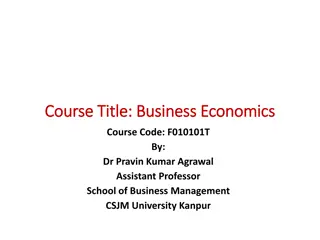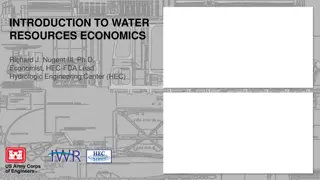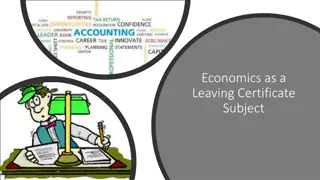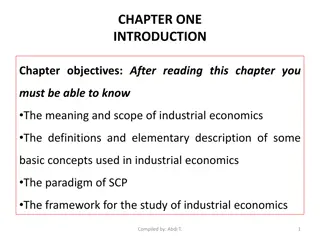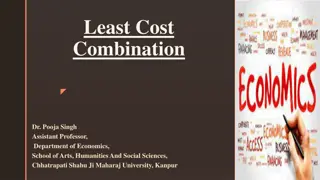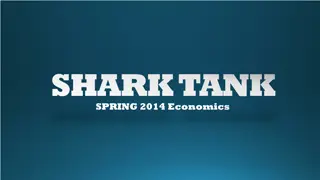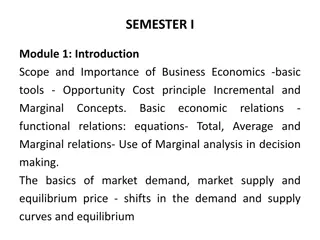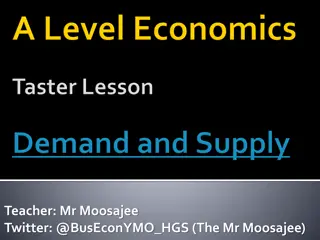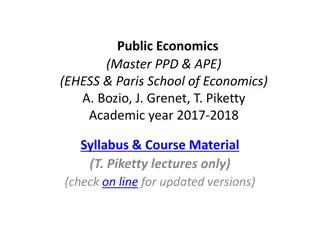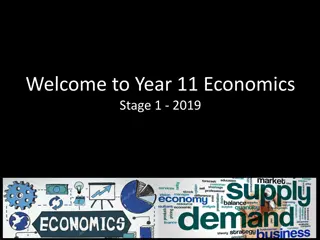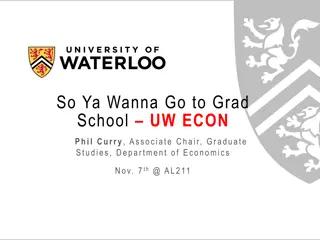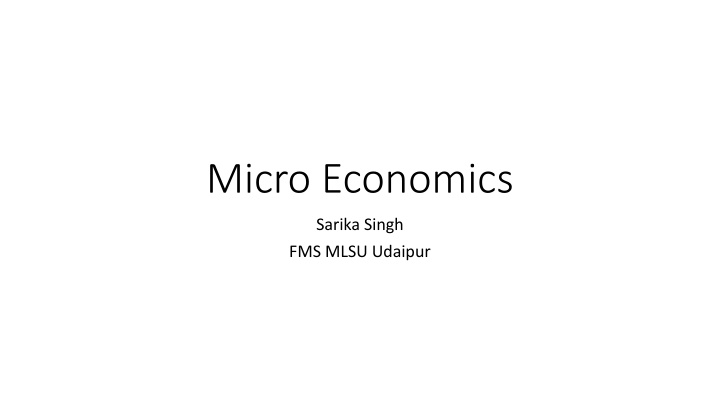
Economics: Micro and Macroeconomic Concepts
Explore the fundamental principles of economics, including microeconomics, macroeconomics, and managerial economics. Discover how economics influences individual and national activities, decision-making, and resource allocation, with a focus on business applications and decision-making processes.
Download Presentation

Please find below an Image/Link to download the presentation.
The content on the website is provided AS IS for your information and personal use only. It may not be sold, licensed, or shared on other websites without obtaining consent from the author. If you encounter any issues during the download, it is possible that the publisher has removed the file from their server.
You are allowed to download the files provided on this website for personal or commercial use, subject to the condition that they are used lawfully. All files are the property of their respective owners.
The content on the website is provided AS IS for your information and personal use only. It may not be sold, licensed, or shared on other websites without obtaining consent from the author.
E N D
Presentation Transcript
Micro Economics Sarika Singh FMS MLSU Udaipur
What is Economics What is Business economics ? What kind of issues does it deal with? How can it help us make better decisions, in business or elsewhere?
What Is economics? Economics is a study of human activity both at individual and National level. Any activity involved in efforts aimed at earning money and spending this money to satisfy our wants such as food, Clothing, shelter, and others are called Economic activities .
In eighteenth century Adam Smith, the Father of Economics, defined economics as the study of nature and uses of national wealth .
Microeconomics The study of an individual consumer or a firm is called microeconomics. Microeconomics deals with behavior and problems of single individual and of micro organization. It is concerned with the application of the concepts such as price theory, Law of Demand and theories of market structure and so on.
Macroeconomics The study of aggregate or total level of economic activity in a country is called macroeconomics. It studies the flow of economics resources or factors of production (such as land, labor, capital, organization and technology) from the resource owner to the business firms and then from the business firms to the households. It is concerned with the level of employment in the economy. It discusses aggregate consumption, aggregate investment, price level, and payment, theories of employment, and so on.
Managerial/Business Economics Managerial Economics is the integration of economic theory with business practice for the purpose of facilitating decision making and forward planning
Economics is a social science, which studies human behaviour in relation to optimizing allocation of available resources to achieve the given ends. Prof. Evan J Douglas, Managerial economics is concerned with the application of economic principles and methodologies to the decision making process within the firm or organisation under the conditions of uncertainty
It involves an application of Economic theory especially, micro economic analysis to practical problem solving in real business life. It is essentially applied micro economics. It is a science as well as art facilitating better managerial discipline.. It is concerned with firm s behaviour in optimum allocation of resources. It provides tools to help in identifying the best course among the alternatives and competing activities in any productive sector whether private or public.
1. Demand Analysis andForecasting 2. CostAnalysis 3. Production and SupplyAnalysis 4. Pricing Decisions, Policies and Practices 5. Profit Management, and 6. Capital Management
The basic tools of demand analysis i.e.; Demand, Demand curve, Determinants, Demand Distinctions and Demand Forecasting etc.
Cost concepts, cost-output relationships, Economies and Diseconomies of scale and cost control..
Economies and Diseconomies of scale Supply analysis Supply schedule, curves and function, Law of supply and its limitations, Elasticity of supply and Factors influencing supply.
Pricing is a very important area of Managerial Economics. In fact, price is the genesis of the revenue of a firm and as such the success of a business firm largely depends on the correctness of the price decisions taken by it. The important aspects dealt with under this area are: Price Determination in various Market Forms, Pricing Methods, Differential Pricing, Product-line Pricing and Price Forecasting.
Business firms are generally organised for the purpose of making profits and, in the long run, profits provide the chief measure of success. In this connection, an important point worth considering is the element of uncertainty existing about profits because of variations in costs and revenues which, in turn, are caused by factors both internal and external to the firm. If knowledge about the future were perfect, profit analysis would have been a very easy task.
It deals with Cost of capital, Rate of Return and Selection of projects..
Incremental Principle Equi-marginal Principle Opportunity Cost Principle Time Perspective Principle Discounting Principle
This principle states that a decision is said to be rational and sound if given the firm s objective of profit maximization, it leads to increase in profit, which is in either of two scenarios- If total revenue increases more than total cost If total revenue declines less than total cost
The laws of equi-marginal utility states that a consumer will reach the stage of equilibrium when the marginal utilities of various commodities he consumes are equal. According to the modern economists, this law has been formulated in form of law of proportional marginal utility. It states that the consumer will spend his money-income on different goods in such a way that the marginal utility of each good is proportional to its price
Opportunity cost is one of the most important and fundamental concepts in the whole of economics. Given that we have said that economics could be described as a science of choice, we have to look at what sacrifices we make when we have to make a choice. That is what opportunity cost is all about. Sacrifice ofAlternatives Opportunity cost is the minimum price that would be necessary to retain a factor-service in it s given use. It is also defined as alternatives the cost of sacrificed
According to this principle, a manger should give due emphasis, both to short-term and long-term impact of his decisions, giving apt significance to the different time periods before reaching any decision Time periods Short-run refers to a time period in which some factors are fixed while others are variable. The production can be increased by increasing the quantity of variable factors long-run is a time period in which all factors of production can become variable. Entry and exit of seller firms can take place easily
According to this principle, if a decision affects costs and revenues in long-run, all those costs and revenues must be discounted to present values before valid comparison of alternatives is possible Discounting Discounting can be defined as a process used to transform future rupees into an equivalent number of present rupees. This is essential because a rupee worth of money at a future date is not worth a rupee today. Money actually has time value. For instance, Rs.100 invested today at 10% interest is equivalent to Rs.110 next year.
He studies the economic patterns at macro- level and analysis it s significance to the specific firm he is working in. He has to consistently examine the probabilities of transforming an ever- changing economic environment into profitable business avenues. He assists the business planning process of a firm. He also carries cost-benefit analysis.
He assists the management in the decisions pertaining to internal functioning of a firm such as changes in price, investment plans, type of goods /services to be produced, inputs to be used, techniques of production to be employed, expansion/ contraction of firm, allocation of capital, location of new plants, quantity of output to be produced, replacement of forecasting, inventory forecasting, etc. In addition, a managerial economist has to analyze changes in macro- economic indicators such as national income, population, business cycles, and their possible effect on the firm s functioning. plant equipment, sales
He is also involved in advicing the management on public relations, foreign exchange, and trade. He guides the firm on the likely impact of changes in monetary and fiscal policy on the firm s functioning. He also makes an economic analysis of the firms in competition. He has to collect economic data and examine all crucial environment in which the firm operates. The most significant function of a managerial economist is to conduct a detailed research on industrial market. information about the
In order to perform all these roles, a managerial economist has to conduct statistical analysis. He must be vigilant and must have ability to cope up with the pressures. He also provides management with economic information such as tax rates, competitor s price and product, etc. They give their valuable advice to government authorities as well. At times, a managerial economist has to prepare speeches for top management. an elaborate


